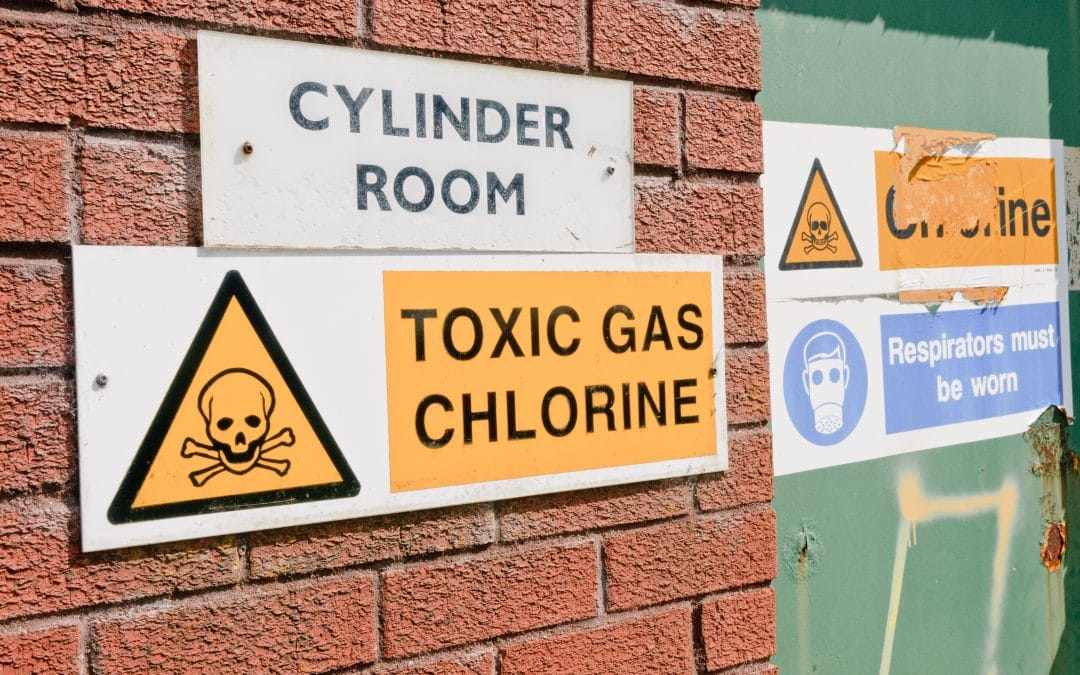A leak of chlorine gas or spillage of chlorine liquid is no joke. The substance can be extremely harmful to anyone who comes into contact with it, causing a wide range of symptoms with varying degrees of severity.
KIT-A The Chlorine Institute Emergency Kit “A” is manufactured to the design specifications of the Chlorine Institute. The Emergency Kit “A” contains devices to stop leaks at the valve, fusible plug, and in the sidewalls of chlorine 100 & 150 lb. cylinders which conform to specification DOT 3A480. Two instruction booklets explaining the application of each device are included.
Take a look below to discover more about our tips for detecting a chlorine leak on your property, and for information on what to do if one does occur.
A Strong Odor is Detected
Chlorine gas will smell very strongly of bleach, particularly in higher concentrations. This is usually the first indication of a gas leak.
Visible Gas
Chlorine gas is visible, and will often appear to be yellow-green in color.
Burning Sensations
The gas is a severe irritant and will cause major discomfort when it comes into contact with skin. This includes burning pain, blistering and reddening. Liquid chlorine can cause injuries similar to those associated with frostbite.
You may also feel a burning sensation in the nose, eyes, throat, and chest, caused by inhaling the chlorine gas or liquid chlorine. Inhaling chlorine gas can cause fluid to build up in the lungs if it remains unchecked for too long.
Problems with Vision
Eyes are quickly affected by chlorine gas or liquid. Vision will become blurry and eyes will begin to water and burn. Rinse the eyes with clean water for between 15 and 20 minutes following exposure to chlorine water or gas.
Nausea
The body’s natural reaction to exposure to chlorine liquid or gas is to become nauseous. This is because the element is fundamentally a poison, and the body automatically works to expel the poison from inside.
Other Symptoms
There are many other symptoms associated with coming into contact with chlorine – either in gas or liquid form. These include;
- Difficulty breathing
- Chest pains
- Severe coughing
- Rattling or wheezing sound in the chest
- Build-up of fluid in lungs
All of these are potential symptoms of chlorine poisoning or of a leak of chlorine gas, but it should be remembered that each symptom could have a different cause. Symptoms will usually be alleviated once you are the affected individual has been moved to an uncontaminated area, but it is still important to seek medical attention straight away.
What to Do Next
Chlorine is a very hazardous substance, and prolonged contact with it can be extremely dangerous. It is important to quickly break contact with the chlorine gas or liquid. This means moving to an unaffected area, cutting off any contaminated clothes (being careful not to spread the chlorine elsewhere), and washing any affected areas for between 10 and 20 minutes for skin, and between 15 and 20 minutes for eyes.
Following this, inform the hazardous materials team so that they can secure the area and prevent further injury, and then seek urgent medical attention. If the leak and exposure are caught in time, there should be little to no long term damage.
For more information on dealing with chlorine leaks or spillages, and to pick up your chlorine emergency kit, get in touch with our team today.

